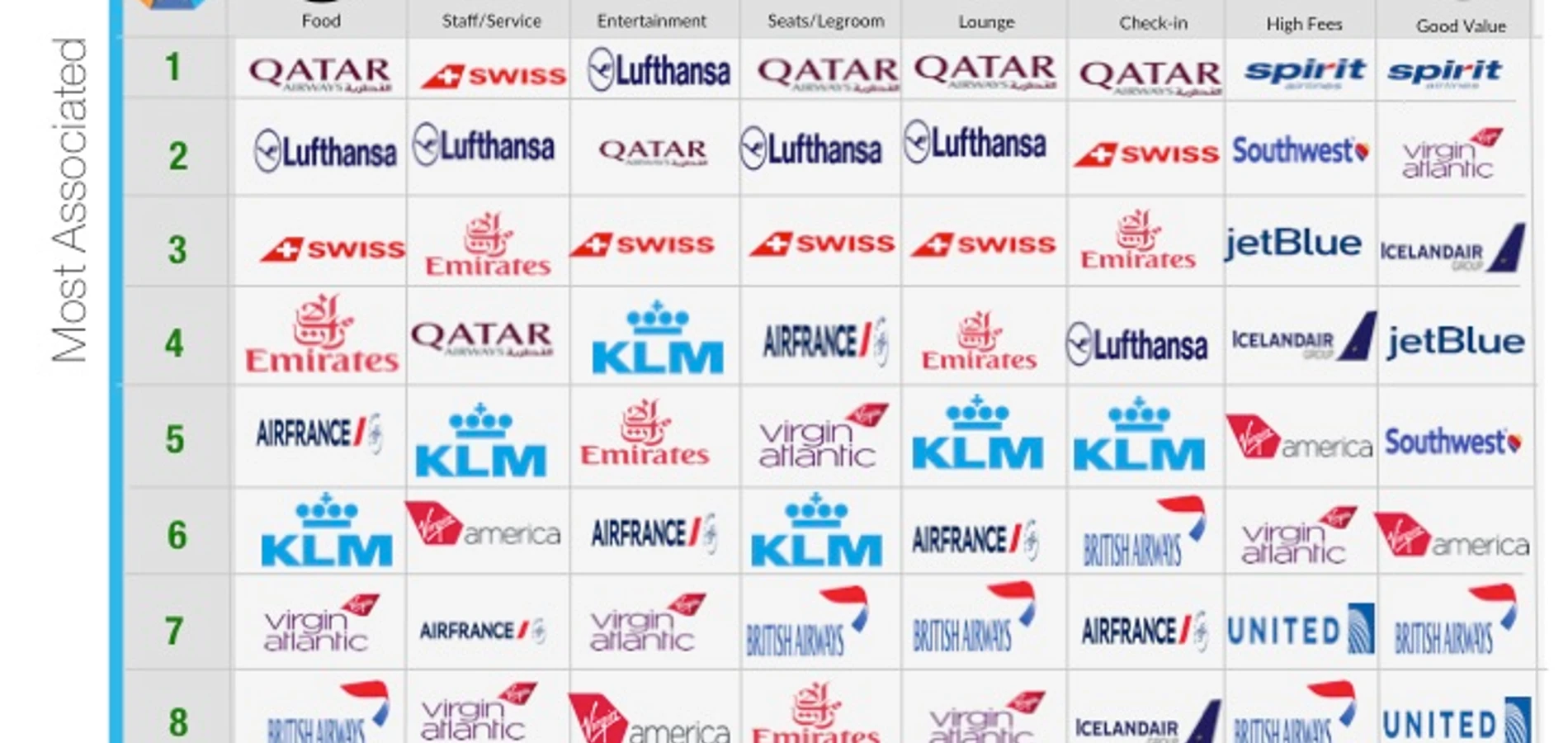Way back in 2014, we used our products Analytics and Compass to collect and analyze over 157,000 tweets about five major US-based airlines in order to see what people liked and disliked about them all. The general findings? Virgin America was a crowd favorite, while United was great at infuriating its passengers.
Time for a redo
This year, we decided to redo this study, but on an even broader scale. This time, instead of looking at just 5 of the top US-based airlines, we expanded our study to look at 19 global airlines. Rather than analyzing tweets, which are prolific but too short to contain much detail, we pulled reviews from Skytrax, a UK-based consultancy that runs an airline and airport review website.
Skytrax does put out its own rankings of different airlines, but we decided to take a very different approach. Rather than ranking the airlines on the basis of the purely quantitative scores accompanying the reviews (5 stars, 4 stars, etc.), we performed an in-depth analysis of the reviews themselves. In short, we took the detailed and nuanced feedback provided by customers and used those to create rankings for a wide variety of categories and topics – not just general rankings based on the average number of stars given in a review.
Your 2017 guide to airlines
Qatar Airways took the lead in the most categories, pulling in the highest scores for its great food, seat comfort and amount of legroom, its lounge, and the check-in process.
If great customer service is what you value, though, you should be flying Swiss International Airlines…. and for good entertainment options, book a seat on Lufthansa.
Math has also finally proven that Spirit is, indeed, everyone’s least favorite airline. It was the most associated with high fees, and scored poorly across almost all other categories. Its only redeeming quality? The rock-bottom fares are still perceived to be a good value.
Other interesting patterns that emerged from the data:
- It seems that missed connections and delays (comments related to “inconvenience”) combined with a staff’s poor operational management and an uncaring attitude (reviews related to “frustration”) were the two feelings that, combined, lead most to the lowest ratings. “Bad food” was also one of the topics that almost always appeared in a bad review.
- Interestingly, the data showed that people generally seemed to leave high ratings if their bad experiences took place on the first leg of their journey and if, during the remainder of their trip, they were left with positive experiences (especially great, friendly, caring service). So it would seem that bad experiences can be erased if excellent experiences follow the bad.
- Curiously, there was a strong correlation that emerged between a high level of positive sentiment around security (i.e. a satisfying security check-point experience), and comfort (i.e. seats/legroom).
The complete results

For more examples of Luminoso in action, check out our resources section, and be sure to follow us on Twitter @LuminosoInsight



























